9 Ways to Bring Home a Little British Colonial Style
At its peak, the British Empire was 100 times the size of Great Britain. The empire encompassed parts of Africa, India, Asia, the South Pacific and North America, exposing colonists to a wide range of design influences. Elements from these international stays ultimately worked their way into what we now know as British Colonial style.
This style made a dramatic impression with neutral surroundings and dark furnishings, responding largely to local motifs and climates to mix traditional British furniture with that of the new empire. These interiors had inviting textures, elegantly carved wood furniture and light and airy atmospheres, creating comfortably sophisticated spaces with a touch of formality.
The well-traveled look remains popular in today's homes. Here are nine ways to add a little bit of British Colonial style to your home.
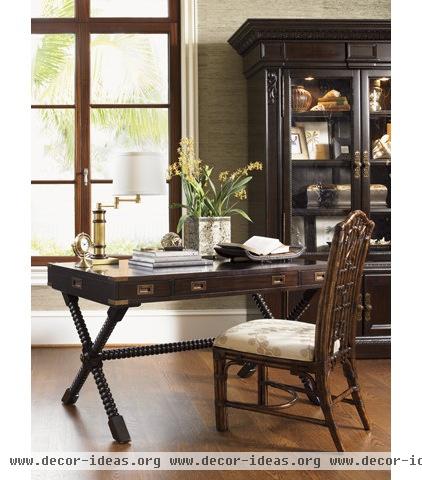
1. Campaign furniture. Motivated by the romance of exotic travel, many British Colonial furnishings were specifically designed to collapse into manageable, travel-ready pieces called campaign furniture. Folding mahogany chairs, writing tables, collapsible beds and liquor cabinets were just a few items that could easily be stored away in a steamer trunk, ready to ship off to the next location.
Get this look: Today's reproduction campaign furniture mimics the collapsible forms of the past (although often without the function). Choose pieces with classic criss-cross legs in clean lines and dark woods, such as the desk in this image.
Thrifted objects — such as old trunks or suitcases — can emulate this well-traveled feel, too.
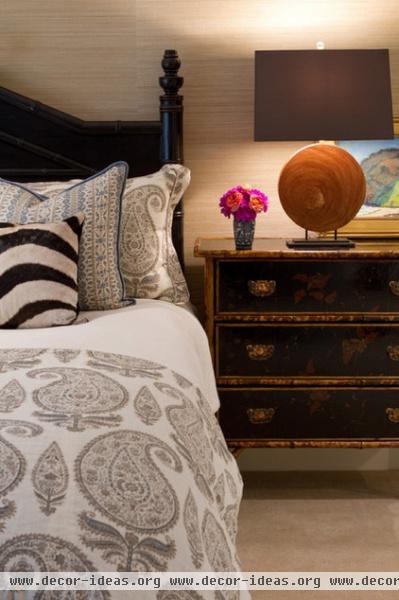
2. Lightweight and eclectic fabrics. Collectors who helped create this style traveled all around the world, bringing back authentic textiles from Asia, India, Africa and the Caribbean. Botanical prints, paisleys, ikats and animal prints in lighter weight cottons and linens were in heavy demand.
Get this look: Mix and match throw pillows for an eclectic, world traveled look. Hang flowing cotton or linen treatments on windows and bed frames for soft, filtered light. You can even suspend lightweight fabrics from your ceiling for a little romance.
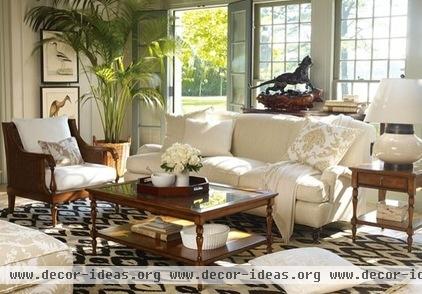
3. Tropical inspired furnishings. During this time, the solid and formal designs of the Victorian era were ultimately adapted to accommodate more tropical locales. Carved pineapples, lattice work and turned elements were carved into woods and used alongside bamboo, rattan and leather accents. The pieces took their inspiration from the tropics but retained elements of British formality with dark woods and turned elements.
Get this look: Classic cane chairs are an easily accessible furniture piece that can help you get the British Colonial look in your home. Try using a chair or two as an accent in a modern room, or immerse yourself in this style by matching a chair with side, coffee and sofa tables.
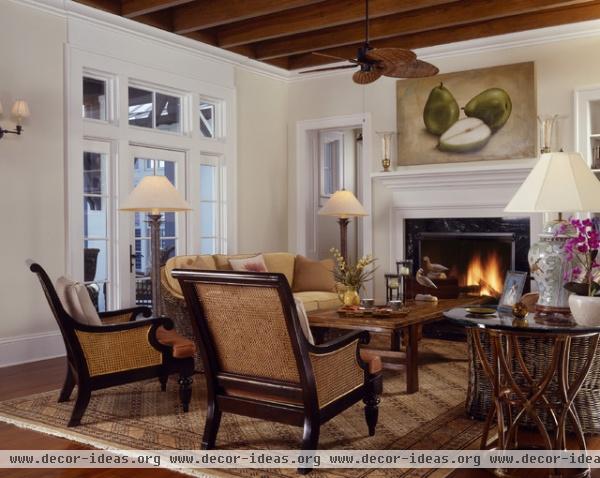
4. Natural texture. Texture is king (or queen) with British Colonial design. Caning, rattan, reed and sisal were often used to add an interesting contrast against traditional darker furniture.
Get this look: Woven window shades, rugs and wallpapers can all help add depth, interest and texture to your space. Look for natural fibers, such as rattan, jute or sisal. If redoing an entire room feels intimidating, start by papering a focal wall or a framed panel to put behind a vignette.
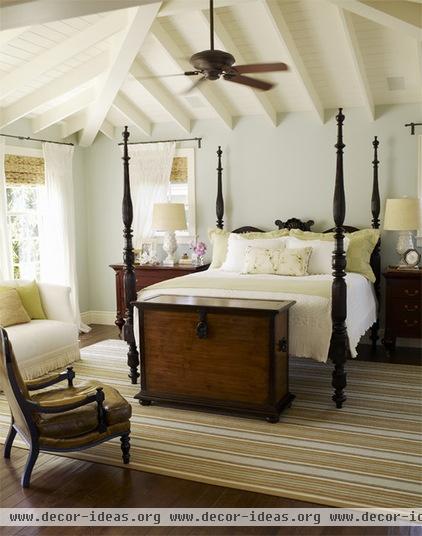
5. Light and airy colors. Light and neutral shades adorned the walls of a traditional British Colonial interior. These airy hues helped colonial house-dwellers psychologically combat the overwhelming tropical heat.
Get this look: Concentrate on subtle shades inspired by the tropics. Pale greens, blues, tans, creams and whites will contrast beautifully against darker furnishings.
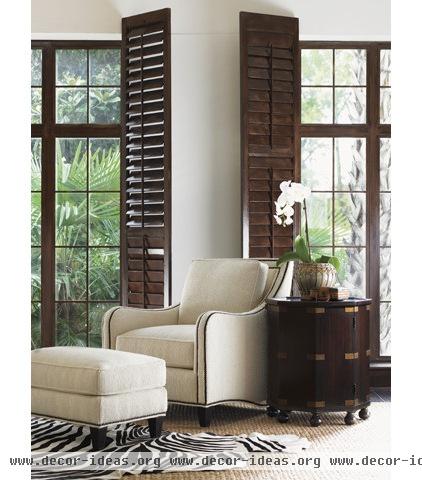
6. Traditional shutters. Window shutters helped control breezes, shut out storms, and deal with the tropical heat in British Colonial homes. Made from local woods, the shutters were either painted or left in their natural wood finish.
Get this look: Many window companies offer shutters in wood and vinyl options that can be ordered as a stock item or customized. Choose a less expensive material and save money on your project.
Certain installation options can potentially keep costs down. Stock shutters installed over the top of window frames rather than an inset mount are usually more affordable. Rather not mess with your windows? A few store-bought shutters strategically placed behind the couch or as a headboard can look beautiful.
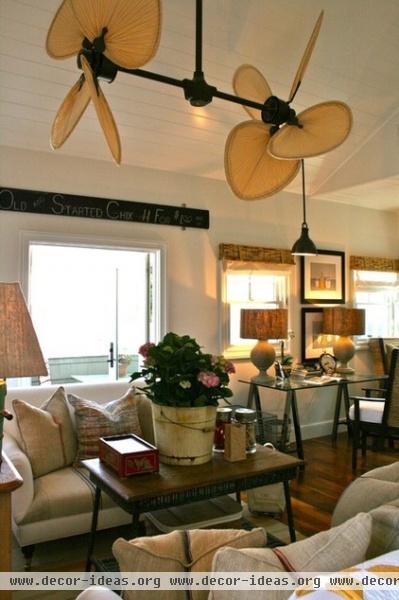
7. Ceiling fans. Fans were an important way to circulate cool air into the home, eventually becoming a key British Colonial home accessory. Their wood, brass and woven elements made a dramatic statement against high, white ceilings.
Get this look: Using woven ceiling fans is a little less expected than the more traditional wooden look. If you're not ready to spend the money on a new ceiling fan, a few woven hand-held fans can make beautiful accents in any room of the house.
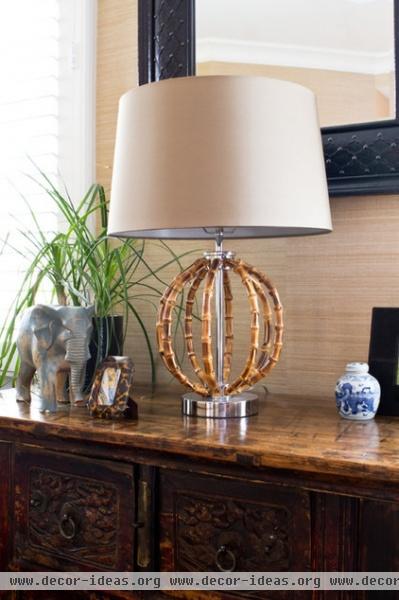
8. Eclectic accessories. The globe-trotting Brits who helped create this design style accumulated a wealth of eclectic accessories that they loved to put on display. Fine china, crystal and silver sat on shelves along with carved pieces, globes, maps, telescopes, letter-writing boxes and tortoise patterned glass.
Get this look: Vignettes of books topped with candles, magnifying glasses and other accessories can help your home look like a collection of trips and experiences. Hit the local flea market or your favorite thrift shop and hunt for maps, globes and telescopes for that old-world travel-inspired look.
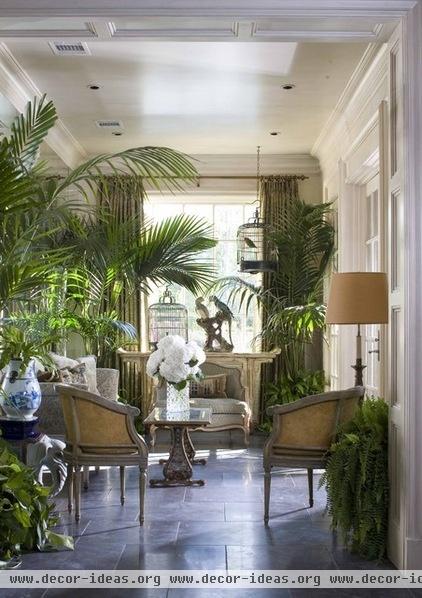
9. Flora and fauna. The Brits were fascinated with the local flora and fauna in their new surroundings, and often brought them into their houses. Potted plants, ferns and palms added the incredible drama of the tropics to these elegant homes.
Get this look: Take a trip to your local nursery or home improvement store and buy some dramatic palms or ferns for a couple of rooms in your house. Do your research first, and find a houseplant that will fit your home and lifestyle best. You'd be surprised how much a few well-placed palms can add to a British Colonial interior.












